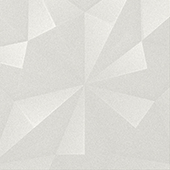
介绍:
跟着英播一起去旅行 这次 带你 走进瑞士。
"B: Switzerland is a landlocked country in Central Europe. It has borders with France to the west, Italy to the south, Austria and Liechtenstein to the east and Germany to the north. Switzerland showcases three of Europe's most distinct cultures. Do you know what are they?
A: To the northeast is the clean and correct, 8-to-5-working, stiffer Swiss-German-speaking Switzerland; to the southwest you find the wine drinking and laissez-faire style known from the French; in the southeast, south of the Alps, the sun warms cappuccino-sippers loitering in Italian-style piazzas; and in the center: classic Swiss alphorns and mountain landscapes. Binding it all together is a distinct Swiss mentality.
B: You are right. Known as The European Roof, the country has not only mountains but also has a central plateau of rolling hills, plains, and large lakes which make it attractive. The three major rivers---the Rhine, Rhone and Inne all originate from it.
A: The climate in Swiss is temperate, but varies with altitude. Switzerland has cold, cloudy, rainy or snowy winters and cool to warm, cloudy, humid summers with occasional showers.
B: Mention of the climate, which is the best time to visit Switzerland?
A: Well, let me think of this. Three times are recommended---June, October and December.
B: In June, the average temperature in Swiss is from 18 to 27 degrees centigrade. During this comfortable time, wherever you are, cities and villages will provide you various art activities. Also, visitors flow rate is not exploded.
A: The best choice in October is to visit villages. Due to the high level of afforestation and agricultural mechanization degree, of the wheat out neatly lays the cabin of the farmers, the sun goes down to the portrait is particularly warm and comfortable, in the end of the field can occasionally see several unknown castles.
B: Wow, sounds like at that time Swiss is reassuring and can easily give tourists a sense of belonging. Switzerland is a ski resort in December. It has the longest and the largest number of downhill ski slopes in Europe. Every December, numerous skiers are attracted by them .
A: Besides, Switzerland has countless snow mountains, the Alps have no need for sharks, there are nearly 50 mountains above 4000.Also, the environment is well maintained, under the blue sky, Snow Mountains are dazzling white.
B: Details of Swiss can’t lose food. The food in Switzerland is a potpourri of influences from various countries. It combines the cuisines of its neighbors and creates from them a local cuisine with local ingredients. There are a few dishes and specialities, such as fondue, Älplermagronen and chocolate, that are typical of Switzerland, but there is no real Swiss cuisine to speak of.
A: You will find sausage everywhere – Switzerland is home to almost 350 different varieties. And that is - in terms of land area - clearly a world record. And incidentally, while not quite the world leader, the Swiss wines are well on the way there. Besides the well-known classics, Switzerland provides for unique tasting pleasure with its new types of wine and development of indigenous varieties.
B: No country is more synonymous with chocolate. More than half of all Swiss chocolate is consumed by the Swiss, making this the obvious place in which to savour it. Switzerland may always have a rivalry with Belgium for the world's best chocolate, but there's no doubting that the Swiss variety is amazingly good.
A: Many different regions of Switzerland have their own regional cheese speciality. Of these, the most well-known are Gruyère and Emmentaler (what Americans know as "Swiss cheese"). Be sure to sample the wide variety of cheeses sold in markets, and of course try the cheese fondue! Fondue is basically melted cheese and is used as a dip with other food such as bread. The original mixture consists of half Vacherin cheese and half Gruyère but many different combinations have been developed since.
B: Besides food, souvenirs are important, too. Switzerland is the watch-making capital of the world, and "Swiss Made" on a watch face has long been a mark of quality. While the French-speaking regions of Switzerland are usually associated with Swiss watchmakers (like Rolex, Omega, and Patek Philippe), some fine watches are made in the Swiss-German-speaking region, such as IWC in Schaffhausen.
A: Switzerland is also the official home of the Swiss Army Knife. They are excellent gifts and souvenirs. The original "Swiss Army Knife" is not red with a white cross (as usually seen by tourists), but gray with a small Swiss flag. The Swiss Army Knife is also produced by Victorinox. Its main particularity is to have the production year engraved on the basis of the biggest blade (and no cork-screw because the Swiss soldier must not drink wine on duty).
B: Ski and tourist areas will sell the other kinds of touristy items - cowbells, clothing embroidered with white Edelweiss flowers, and Heidi-related stuff. Swiss people love cows in all shapes and sizes, and you can find cow-related goods everywhere, from stuffed toy cows to fake cow-hide jackets."
播音:王珊 温述安
文稿:王珊 温述安
导播:刘舒月
大家还在听

